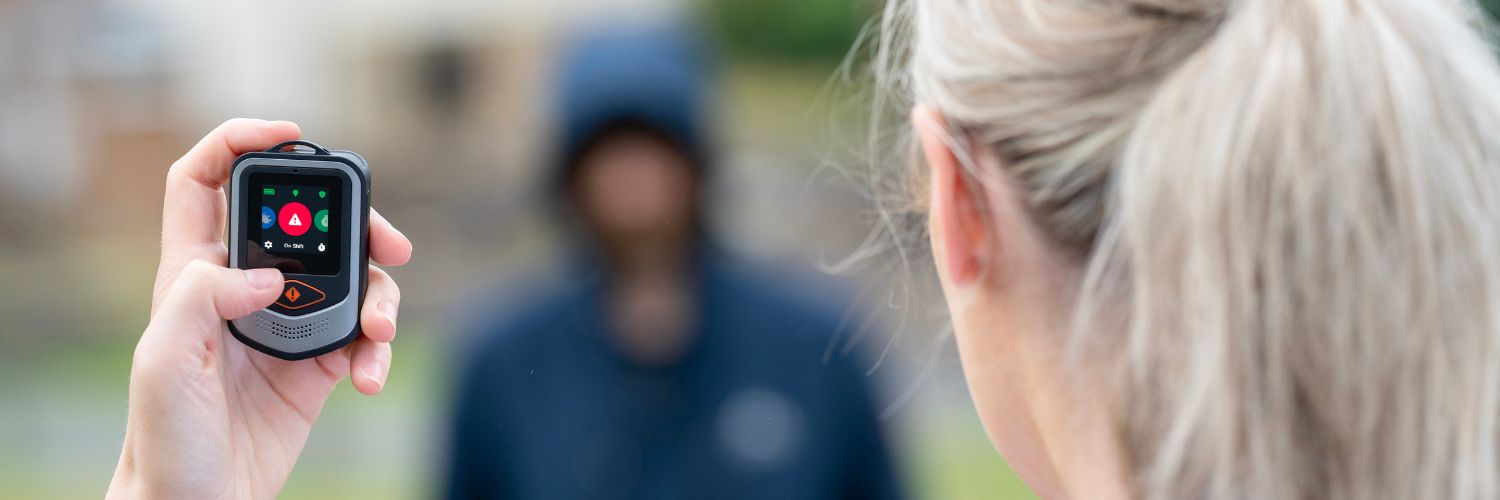Stalking and Harassment at Work: UK Law, Employer Responsibilities, and How to Support Victims
Learn the legal definitions of stalking and harassment, how they differ, and what employers must do to support victims and protect lone workers.

Why Employers Must Take Stalking and Harassment at Work Seriously
Stalking and harassment affect millions across the UK — including in the workplace. According to the Suzy Lamplugh Trust, up to 1.5 million people in England and Wales experience stalking annually. While often underreported, these behaviours can lead to anxiety, lost productivity, absenteeism, and even physical harm — especially for lone workers and public-facing roles.
Stalking doesn’t only affect high-profile individuals. Ordinary workers across healthcare, retail, education, hospitality, and public services are frequently targeted — often in or around their place of work.
In the UK, employers are legally required to safeguard employees from foreseeable risks — including those posed by stalking and harassment. This means recognising the signs, offering appropriate support, and having effective lone worker protection measures in place.
What Is the Legal Definition of Stalking and Harassment?
Under UK law:
- Harassment is behaviour intended to cause distress or alarm, or that has this effect — even if not intended.
- Stalking is a form of harassment involving fixated, obsessive, and repeated behaviours, such as:
- Repeated unwanted contact (online or offline)
- Following or monitoring someone
- Sending gifts or messages
- Showing up at their workplace or home
Employers have legal responsibilities under:
- The Protection from Harassment Act 1997
- The Health and Safety at Work Act 1974
- The Equality Act 2010 (if harassment relates to a protected characteristic)
Spotting the Signs of Workplace Stalking or Harassment
Stalking and harassment can be subtle. Employers, managers, and colleagues should watch for warning signs like:
- A sudden decline in work performance or attendance
- Emotional distress, anxiety, or fear about coming into work
- Regular personal calls, emails, or unexpected visits
- Reluctance to be alone or leave the workplace after hours
- Mention of unwanted attention or relationship difficulties
These signs may be more difficult to spot in lone workers or remote employees, making regular check-ins and open communication essential. You can use Suzy Lamplugh Trust’s video assessment tool, "Am I being stalked?".
Employer Responsibilities: Creating a Safer Work Environment
Employers must take reasonable steps to protect employees from risks like stalking and harassment — particularly for lone, remote, and public-facing workers.
Key actions include:
- Conducting regular risk assessments, especially for lone or high-risk roles
- Implementing and enforcing a Lone Worker Policy
- Providing training for managers on how to handle disclosures
- Offering discreet personal safety devices or apps for at-risk employees
- Establishing a clear reporting process for incidents
- Ensuring confidentiality and compassion in all responses
Technology Can Help: Lone Worker Devices for Enhanced Protection
Personal safety solutions can play a crucial role in safeguarding employees vulnerable to stalking. These may include:
- Discreet panic buttons (Red Alert functionality)
- GPS location tracking for emergency response
- Audio recording for evidence and investigation
- Check-in and monitoring timers for added security during shifts
These tools are particularly important for lone workers who may face risks when travelling, visiting client homes, or working late hours.
Free Guide: Supporting Victims of Stalking in Your Workforce
We’ve partnered with the Suzy Lamplugh Trust to create a free downloadable guide that helps employers:
- Understand what stalking looks like in the workplace
- Spot red flags and identify high-risk employees
- Meet legal duties and improve lone worker safety
- Introduce supportive measures and safety tools
- Build a culture of trust and proactive wellbeing
Who should read it?
- HR and People teams
- Health & Safety Officers
- Line Managers and Team Leaders
- Compliance and Legal staff
- Anyone managing lone or vulnerable workers
You can download it for free by filling your details into the form below.
What to Do If You’re Being Stalked: Advice and Support
If you think you’re being stalked and you want to find out what you can do, contact the National Stalking Helpline on 0808 802 0300 or complete their enquiry form. The helpline is open 9.30 – 16.00 every weekday, apart from Wednesday when they operate extended hours 09.30 – 20.00.
Whether it’s happening at work, online, or elsewhere, victims should also report incidents to their employer or HR team if it affects their wellbeing at work.
You can also visit the following websites:
Take the Next Step in Protecting Your Lone Workers
Proactively addressing stalking and harassment isn’t just the right thing to do — it’s a legal obligation. Employers who support victims of stalking build safer, more engaged workplaces and protect their organisations from reputational and legal harm.
Book a free demo, request a quote, or get answers to your questions:
- Book a Lone Worker Safety Demo →
- Get a No-obligation Quote →
- Contact Us →
- Call us: 0114 399 6000
Your message has been received and we will be in touch shortly.










.webp)
.webp)









